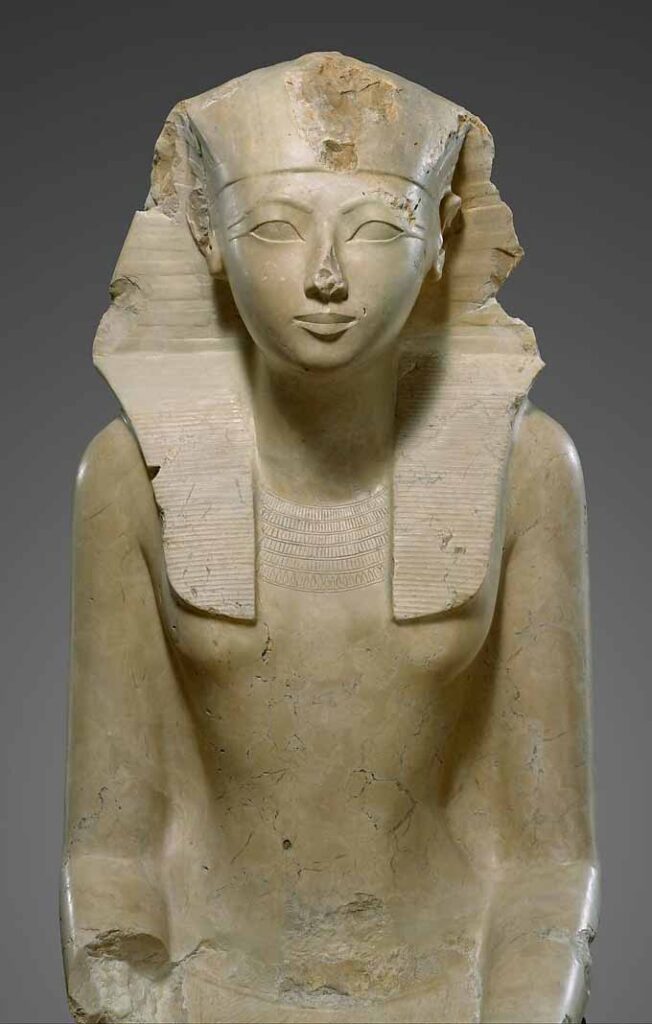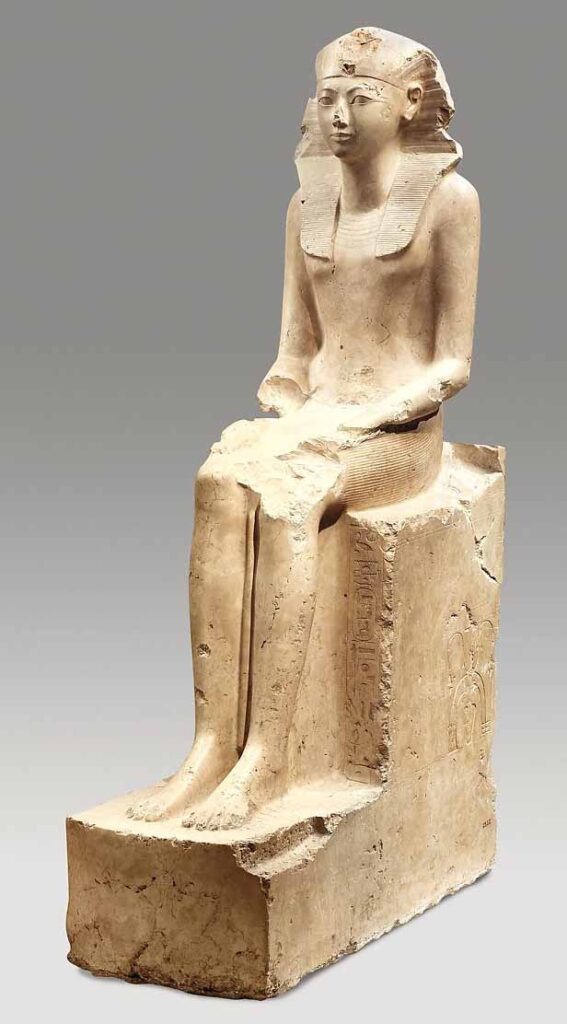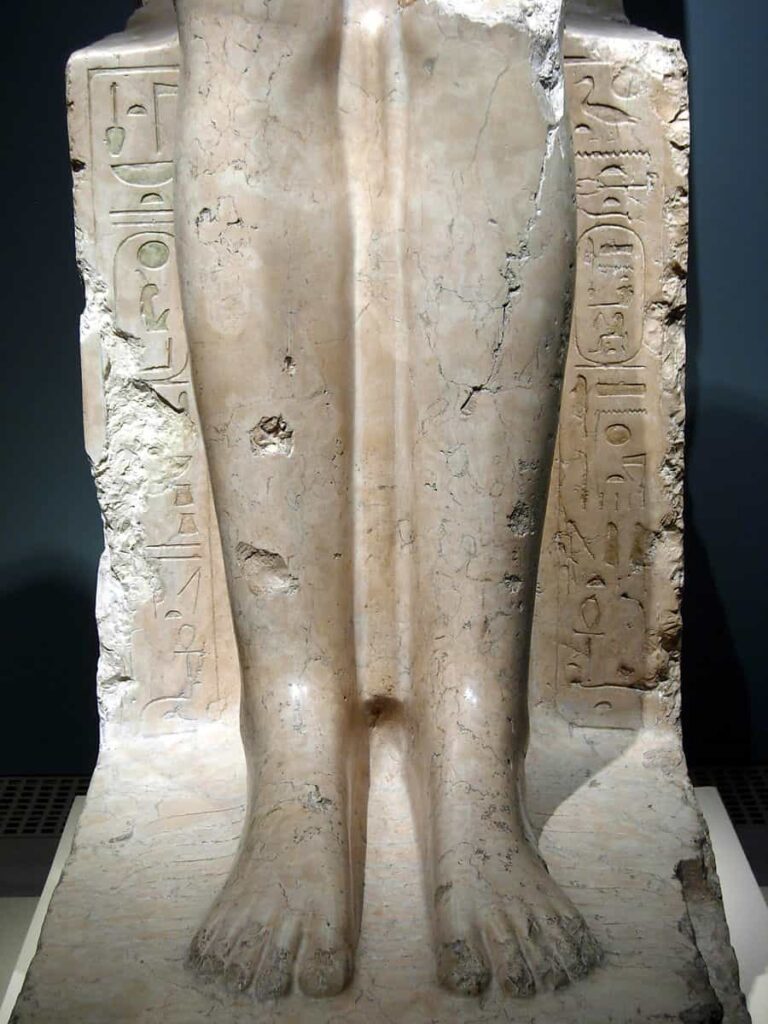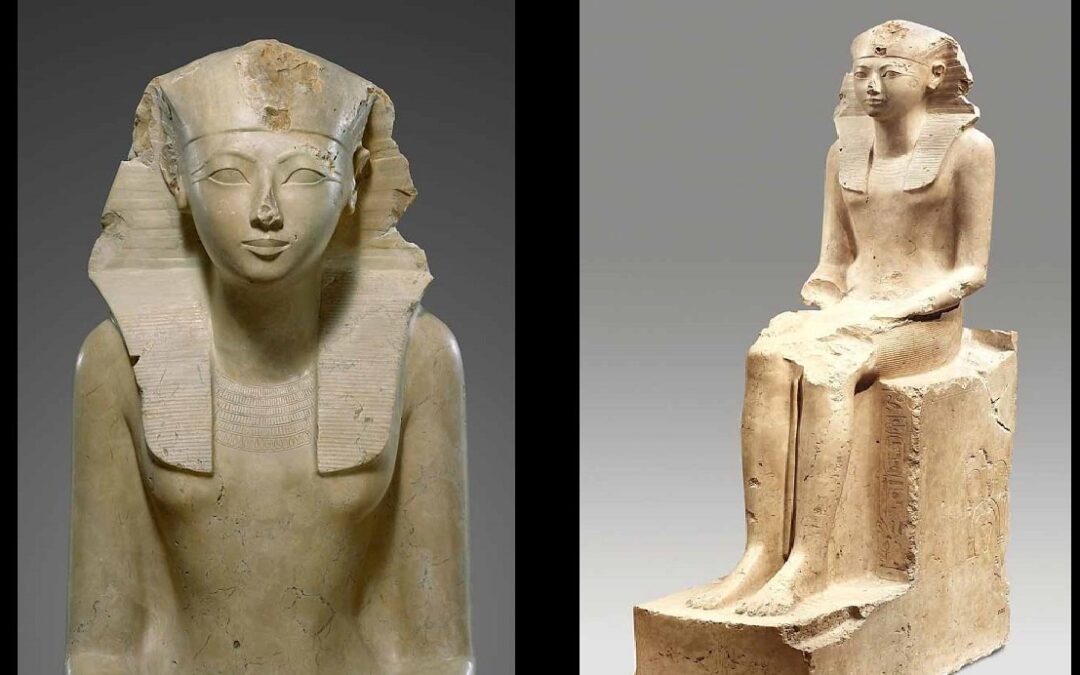The Seated Statue of Hatshepsut is a sculpture dating approximately between the years 1479 BC and 1458 BC, belonging to ancient Egyptian art.
It was discovered in 1843 during archaeological excavations by Karl Richard Lepsius, a German linguist, librarian, and Egyptologist.
The sculpture was found inside the mortuary temple of Hatshepsut, which is located in the Deir el-Bahari complex on the west bank of the Nile River, opposite the ancient city of Thebes (Egypt).
In 1929, the sculpture was purchased by the Metropolitan Museum of Art in New York City, where it became part of its art collection.
Who was Hatshepsut?
Hatshepsut was the fifth queen-pharaoh of the Eighteenth Dynasty of ancient Egypt, ruling Egypt from approximately 1490 BC to 1468 BC, for a period of 22 years.
During her reign, numerous temples were restored with the intention of beautifying the country after it had been devastated by various previous wars.
Among all the buildings that she ordered to be constructed, the following stand out: the Red Chapel of the temple of Amun in Karnak, a group of large obelisks, and the funerary temple located in Deir el-Bahari.
Description
The sculpture has a height of 213 cm, a width of 50 cm, and a diameter of 119 cm. It is made of limestone and was created using incision and carving techniques.
The sculpture depicts the queen-pharaoh Hatshepsut in a seated position on a throne, with her hands resting on her knees. The facial features, such as the marked eyebrows, almond-shaped eyes, straight nose, full lips, and rounded chin, are prominent.
Hatshepsut wears the nemes headdress on her head, which is an ornate headdress with horizontal bands that cover the entire head and fall behind the ears, tied with a knot near the nape of the neck.
It is also fixed on the forehead by means of a band or diadem that was decorated with the ureus (a cobra and a vulture). It is worth noting that in Ancient Egypt, the ureus was the protective emblem of the pharaohs, though it is not present on the sculpture today.
She also wears a pectoral pendant made up of several beads arranged in horizontal bands around her neck. The front of the throne has various hieroglyphic inscriptions, including the cartouche with the name of Hatshepsut, as well as all her titles. The sides of the throne bear her royal titles, such as “The Perfect Goddess,” “Lady of the Two Lands,” and “Daughter of Ra.”
Regarding the composition, traces of blue pigment have been found in some hieroglyphs, and a small fragment located on the back of the head shows that the folds of the nemes headdress were originally painted with alternating blue and yellow pigments.
Finally, it should be noted that researchers believe the Seated Statue of Hatshepsut was originally located in one of the less public areas of the mortuary temple, such as the chapels located on the upper terrace. It is currently housed in the Metropolitan Museum of Art in New York City, United States of America.









